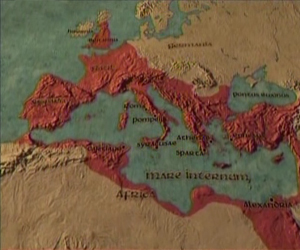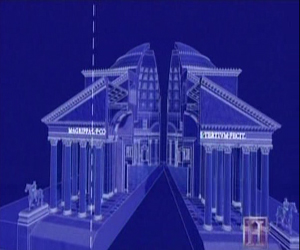Rome

The empire at its height, 117 A.D.
Rome was the one of the defining empires of history. At its height, the empire spanned from Britain, to Spain, to Turkey, and parts of North Africa. Their technological achievements were unmatched until the Renaissance era. One of the great achievements was concrete, which not only allowed them to build stronger and bigger, but also allowed them to build underwater. With their superior system of roads, Rome was able to consolidated its power effectively, and allow roman cities to grow and prosper across the empire. The empire finally ended in 476 A.D., but its engineering achievements still stand to this day.

The Pantheon.
One of Rome's most famous buildings is the Pantheon. Built in 126 A.D. by the emperor Hadrian, it was for use as a temple dedicated to all of the Roman gods. Know for its dome ceiling over the rotunda, the interior space, is a concrete dome spanning 150 feet both horizontal and vertical, with out support from columns. The engineering achieved this result by building the walls of the Pantheon thicker then normal walls, and using lighter amounts of concrete as the built higher. Both of these techniques allowed for the ceiling to spread its weight evenly. The Pantheon was almost built mathematically perfect accept for one flaw. The interior gate was built 10 feet too short, and historians are still puzzled over why.





